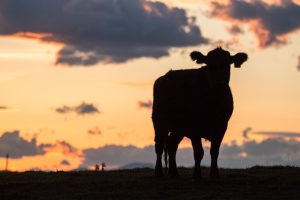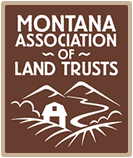The Eleventh Annual Montana Forest Landowner Conference, sponsored by the Montana Forest Stewardship Foundation and Northwest Management, Inc., is set for April 22-23. Registration closes on Friday, April 16. The virtual conference provides a wealth of information for forest landowners and land trust staffers. Visit the Foundation website to register. Attached as a conference brochure.
2021 News
PPLT’s “Happy Snails” Train for Don’t Fence Me in Run
Happy Snails – The Happy Snails, a friendly trail-running group affiliated with Prickly Pear Land Trust, is training for the PPLT annual Don’t Fence Me In Virtual Trail Run and Trail Challenge. The photo and this caption are from a Happy Snails Facebook post: On May 8th, we will lead an “at your own pace“ adventure, along the 5K course to kick off DFMI! We encourage all ability levels to come check us out! No pace is too slow for a Snail! Learn more about the virtual race and trail challenge at the PPLT website.

Blackfoot Challenge Offers “Stories From the Field”
The “Stories from the Field” virtual event by the Blackfoot Challenge on April 14 not only offers some great information, but some pretty cool prizes as well.
The event runs 7:00 PM – 8:00 PM and just for registering you’re eligible for a raffle that includes: 10 pounds of Blackfoot Conservation Beef from Iverson Family Ranch, a sweet KettleHouse Brewing Company swag basket, a Blackfoot Challenge swag basket, or $100 worth of gift certificates to Blackfoot watershed restaurants.
There’s more, reports the Challenge: Stop by KettleHouse’s Bonner or Myrtle Street taproom on the day of the event and show your registration for HALF OFF a growler fill to enjoy during the show!
Challenge projects and activities covered during the April 14 event will include:
– How prescribed fire is being used to improve forest health
– A trumpeter swan’s journey of survival in the Blackfoot and beyond
– Innovations in using electricity to reduce conflicts with carnivores
– How drones are helping in the fight against weeds like cheatgrass
– Designing a stewardship plan that works for both cows and fish
– How beavers can help increase stream health and drought resilience.
Bitter Root Land Trust Invites You to “Conservation Conversations”
Bitter Root Land Trust executive director Gavin Ricklefs is inviting BRLT friends and Ravalli County residents to “Conservation Conversations: A Virtual Q & A with BRLT Staff,” on April 14, from 7:00 – 8:00 PM. Gavin will be joined by BRLT’s newest staff member, conservation project manager Melissa Odell. Melissa has a background in wildlife biology and brings a unique perspective to BRLT. Among the discussion items will be “exciting project updates and a sneak peek into what is next” at BRLT.
“Bring your favorite local beverage and let’s toast all of the conservation success that you helped make happen over the past year throughout the valley,” Gavin writes in the invitation. “We’ll also take a sneak peek at the incredible opportunities to conserve the valley’s water, wildlife, and working lands your support and love for the Bitterroot has made possible in 2021.”

Prickly Pear Land Trust: 25 Years and Going Strong
The Spring 2021 edition of Open Land, the Prickly Pear Land Trust newsletter, features an article celebrating PPLT’s 25th anniversary. Pages 2 and 3 of the newsletter offer perspectives from several notable past PPLT leaders, including Chris Hunter, Connie Cole, Lisa Bay, Andy Baur and Ken Eden. The newsletter also provides an update on PPLT’s impressive East Helena Greenway Project. Congrats to PPLT for a quarter-century of great contributions to greater Helena and the surrounding area.
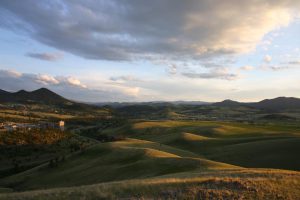
TNC, RMEF Part of Forest Action Plan
Mark Aagenes of The Nature Conservancy in Montana and Blake Henning of the Rocky Mountain Elk Foundation are members of the Montana Forest Action Advisory Council, a group that has worked to create the Montana Forest Action Plan (Plan).
The Plan, within the Montana Department of Natural Resources and Conservation, has produced 14 new forest management projects across Montana that will receive funding to reduce the risk of wildfire, improve forest health and wildlife habitat, and support local forestry economies. The DNRC has committed $4.5 million from state and federal sources for the 14 projects. DNRC reported that demand for this funding was high, with a total of 47 proposals totaling $14 million. The successfully funded projects support cross boundary, landscape-scale forest restoration and management goals identified in the Montana Forest Action Plan.
See the full list of projects funded here. The diverse projects are located throughout Montana.
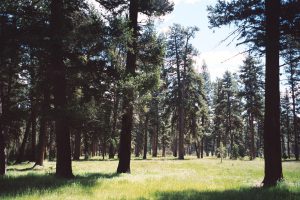
NRCS Celebrates 5 Million Acres of Agricultural Conservation
The Natural Resources Conservation Service is celebrating a major milestone: 5 million acres conserved through conservation easements. The total include 2.8 million acres nationwide for wetland easements and 1.9 million acres across the US for ALE easements.
“USDA is committed to partnering with our nation’s farmers, ranchers, and private landowners to conserve our nation’s natural resources for future generations and deliver conservation and recreational benefits to rural America,” said Agriculture Secretary Tom Vilsack.
Thanks to a strong partnership among farm and ranch families, the NRCS, and land trusts, Montana is a national leader in the NRCS ALE Program and agricultural conservation.
Elk Habitat Protection Vs. Gallatin Urban Sprawl
An interesting article in the Mountain Journal showcases some stunning photos by Holly Pippel, elegant commentary by Todd Wilkinson and a tip of the hat to Gallatin Valley Land Trust in discussing the impact of Bozeman’s population boom on local wildlife.
Wilkinson writes: Montana has more wild, free-ranging elk than at any point going back at least 140 years. The irony is that northern offshoots of the famous Gallatin elk population which spill out of the Gallatins into the Gallatin Valley at certain times of the year could become small remnants or worse, disappear, as development pushes out inexorably from Bozeman. Will elk that come out of the northern Gallatins soon be unable to reach Ted Turner’s Flying D Ranch west of US Highway 191?
Is Gallatin Valley destined to have only scattered, dwindling pockets of half-wild, half-tame elk that have lost their instinct to migrate, roaming the suburbs and golf course fairways like white-tailed deer?
The article contains a Q&A with Pippel in which she discusses her observations and photography. One photo caption in the article reads: More humans building dream homes and ranchettes can become a nightmare for stressed out wildlife. Condos, often accompanied by traffic, road infrastructure, barking dogs and a maze of other obstacles, are not better for elk than cows or cropland. The Gallatin Valley Land Trust has done a good job taking advantage of opportunities from willing sellers when they arise to attach conservation easements to ag lands. But the group’s ability to save crucial corridors is being outpaced by subdivision.
The photo caption goes on to read: And nowhere are any other Bozeman conservation groups rigorously scrutinizing county decision-making. With more money, the Land Trust could do a lot more by incentivizing conservation choices for property owners. (Ed. Comment: That is not a knock on GVLT. And with significant additional funding every MALT member “could do a lot more.”)
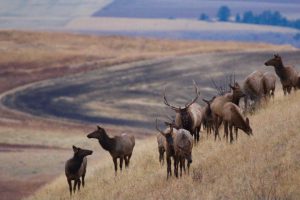
Good Things Happening At Bad Rock Canyon
A featured article in the Flathead Beacon outlines the progress – as well as the challenges and value – of the Bad Rock Canyon conservation project along the Flathead River in northwest Montana.
The project, led by Flathead Land Trust and the Montana Department of Fish, Wildlife and Parks, seeks to conserve close to 800 acres of prime wildlife habitat that contains 1.6 miles of the Flathead River at the former Columbia Falls Aluminum Co. property. The project has been endorsed by the Montana Fish and Wildlife Commission and local partners that include CFAC’s parent company Glencore, the City of Columbia Falls, and MTFWP.
The project seeks to raise $7.1 million to purchase the property, with ownership transferred to FWP and managed as a wildlife management area. FLT is leading the fundraising effort, and has already raised $5.5 million.
“Most of this funding has come from large federal and state grants and we hope much of the remaining needed funding will come from a state grant,” according to Laura Katzman of Flathead Land Trust. “However, these federal and state grants require matching funds. We have about $350,000 left to raise in needed match [grants] and we have some exciting news. Three generous donors have offered to contribute up to $100,000 toward this needed match if we can raise $100,000 from community members by July 15.”
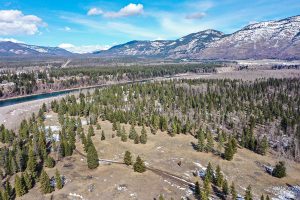
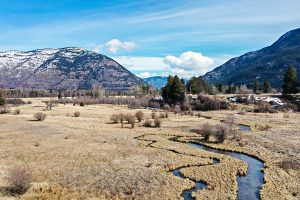
MALT Celebrates National Agriculture Day
Happy National Ag Day 2021! Agriculture stands strong in Montana.
Laura Verhaeghe photo
